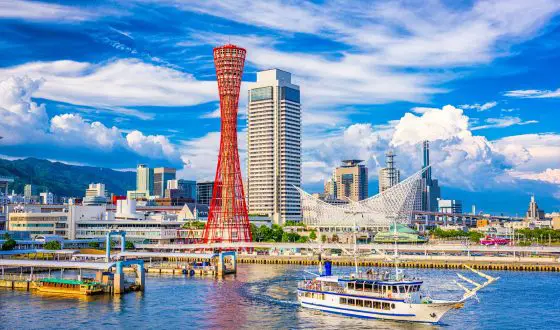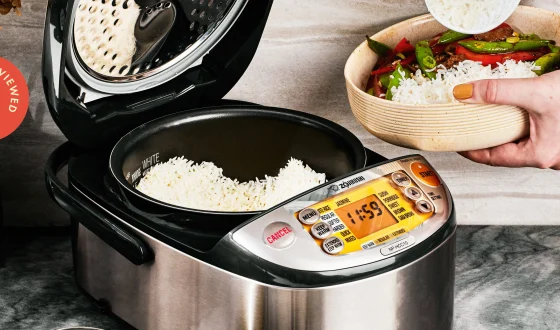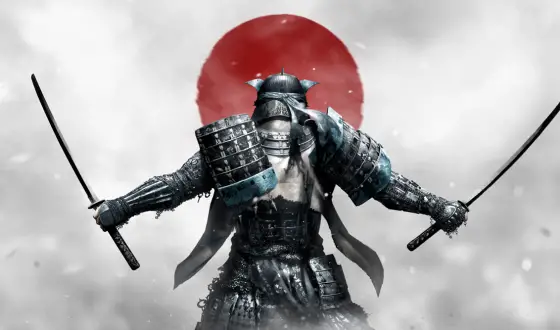Electrical Outlets In Japan – The Ultimate Guide by Experts
Which plugs and electrical outlets should you bring with you when visiting Japan? Do you intend to bring your current socket or purchase a travel adapter? Whatever decision you make, you have to ensure your own electrical devices work in Japan.
In this article, we will discuss the voltage, frequency, and electrical outlets in Japan as well as tips to help you use electrical appliances in Japan more safely and effectively.
The Voltage And Frequency In Japan
In Japan, all electrical outlets offer a standard voltage of 100V as well as a frequency of 50Hz and 60Hz. If the typical voltage in your home country ranges from 110 to 127V (which is the case in the United States, Canada, and the majority of South American countries), you can use your electrical devices in Japan.
If the standard voltage in your nation is between 220 and 240 volts (it’s commonly found in Europe, Asia, Australia, and Africa), you may need a voltage converter in Japan. It’s said that using your electronics in Japan without a converter is a risky decision.
The devices may not function to their fullest capacity if the voltage is incompatible, especially with electronics that have hot parts, including curling irons, hair dryers and similar items. This does not imply that your appliances are damaged; rather, it just means that they cannot function properly at a lower voltage. Use a converter if you want to avoid any risks.
In Japan, frequencies of 50Hz and 60Hz are standard. Be careful whilst plugging in your gadgets if this frequency is different from the frequency found in your country. To find out if your device is compatible with this frequency or not, read the appliance’s small print.
The voltages that your item may operate with are displayed in a small print on the power adapter or the device. If the adapter is printed 100-240V 50/60Hz, it has been designed to function with any voltage in the world. Please be aware that electrical plug adapters do not change voltages; they only convert plug types.
The frequency differs by area in Japan. Eastern Japan, which includes Tokyo and Yokohama, utilizes a frequency of 50Hz. On the other hand, Western Japan, such as Osaka and Kyoto, operates at 60Hz. The majority of small electronics can handle both frequencies, but to make sure, please read the charger’s or the appliance’s small print.
Japan Electrical Outlet And Plug Types
Most electrical outlets in Japan are similar to those in North and South America. Despite Japan’s 100V voltage being lower than the voltage of 110V in North America and 230V in some European countries, they are mostly still compatible and working properly.
The compatible plug types for Japan are both types A and B. Type A – Typically used in the United States, Canada, Central America, China, and Japan. An outlet of type A will not accept any other plug types. Compared to type A, type B has an additional pin for grounding. Utilized mostly in the United States, Canada, Mexico, Central America, and Japan. A type B outlet can handle type A plugs as well.
1. Type A Outlet
- Type A outlets are the most prevalent in Japan.
- They feature two flat parallel pins.
- These outlets are suitable for devices with two-pin plugs that do not require grounding.
- Common examples of devices that fit Type A outlets include smartphones, laptops, and many small appliances.
2. Type B Outlet
- Type B outlets are less common but can still be found in certain locations in Japan.
- They feature two flat parallel pins like Type A, but they also include a grounding pin.
- The grounding pin is a safety feature that provides an additional path for electrical currents to dissipate in case of a short circuit.
- Devices with three-pin plugs, including some laptops and larger appliances, can be used with Type B outlets.

The compatible plug types for Japan are both types A and B. (Source: Internet)
Despite the fact that both the United States and Japan utilize type A and type B plugs and outlets, they are not exactly the same. In comparison to Japanese plugs, one of the 2-pins on US plugs is bigger. This indicates that Japanese plugs can likely operate in the US, though, the US plugs may not be compatible with Japanese power sockets.
Electrical outlets type A with two-pin ungrounded are the most widely used in Japan. Older hotels and houses frequently use non-polarized two-pin outlets. You will require a travel adapter in Japan if your devices use a three-pin plug.
Most North American devices will operate smoothly in Japan without using an adapter and vice versa, nevertheless, other devices, particularly those that require heat (such as hair dryers), may not function effectively or may sustain damage. If you want to purchase electrical appliances in Japan to utilize outside of Japan, it is advisable to search for devices created specifically for international travelers.

If you want to purchase electrical appliances in Japan to utilize outside of Japan, it is advisable to search for devices created specifically for international travelers. (Source: Internet)
What types of plug sockets are utilized in Japan?
1. Voltage Converters and Transformers
Electricity supplies worldwide can range from 100V to 240V. It’s crucial to avoid using an electrical device with a voltage rating different from the local supply, as this can pose serious risks.
Because voltage levels can vary between countries, you may find it necessary to employ a voltage converter or transformer when in Japan. Additionally, if the frequency differs, it can impact the normal operation of electrical devices.
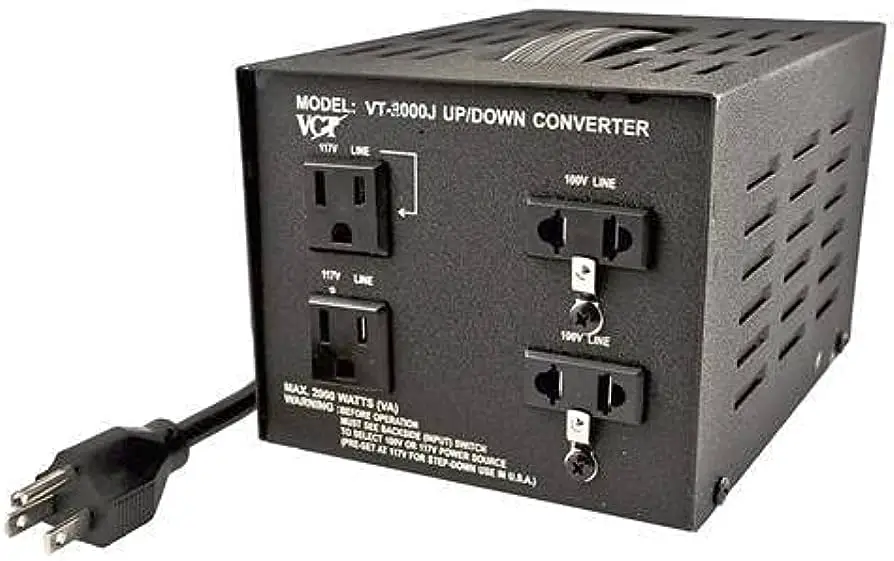
It’s crucial to avoid using an electrical device with a voltage rating different from the local supply, as this can pose serious risks. (Source: Internet)
For instance, a 50Hz clock may run faster when connected to a 60Hz electricity supply. Most voltage converters and transformers are typically provided with plug adapters, eliminating the need for a separate travel adapter.
Every converter and transformer will have a maximum power rating, denoted in either AMPS or WATTS. It’s essential to ensure that any appliance you intend to use falls within this rating.
2. Dual Voltage-Rated Appliance
To determine whether you’ll require a converter or transformer, inspect the appliance’s rating plate.
A dual voltage-rated appliance will typically display information like ‘INPUT: 100-240V’ on its body or power supply. In this case, you won’t need a converter or transformer, only a travel adapter. This is because Japan operates on a 100V supply voltage, which falls within the 100-240V range that dual voltage appliances support.
3. Single Voltage-Rated Appliances
In Japan, the supply voltage is 100V. If an appliance or its power supply lacks dual voltage compatibility, single voltage-rated appliances will need to be used in conjunction with a voltage transformer or converter to ensure their safe and proper operation (unless the appliance operates at 100V).
Converters and transformers serve similar functions but are suited to different applications. Converters are typically used with appliances that operate for short durations (1-2 hours), while most transformers can be used alongside appliances that operate continuously.
It’s important to note that some travel adapters are not suitable for appliances that require an earth connection. These types of travel adapters should only be used with double-insulated equipment, clearly marked with the symbol shown below.
Do I Need A Travel Adapter (Plug Adapter) In Japan?
While certain North American electronics will function in Japan without the need for a travel adapter/plug adapter, it is generally advised to pack one with your trip. Straightening irons, hair dryers, and other electrically heated devices sometimes overheat or malfunction when plugged into Japanese electrical outlets without a plug adapter/travel adaptor.
Additionally, several hotels also offer special amenities like blow dryers that are designed especially for use by foreign visitors.
In general, visitors from the US and Canada do not require a plug adaptor, however, Japan utilizes two frequencies, and they may need a frequency converter. Visitors from other countries are likely to need a plug adaptor as well as a frequency and voltage converter.
Japan uses both type A and type B plugs and electrical outlets. You have no need for a travel adapter if your home country’s power plugs and electrical used are similar to Japan’s.
You won’t need your country-to-Japan power plug adapter for any electronic devices using the Type A plug, which has just two flat prongs and may be plugged directly into any electrical socket in Japan.
An adapter is necessary if the devices you’re bringing include a third-round prong plug (for example, a laptop). Type B plugs might be available, however, they are uncommon in Japan. Everything you should do is find out if the power plugs and electrical outlets used in Japan are different from those in your home country.
In the case of having differences, a travel adapter is required. To determine if you’ll need a travel adapter in Japan, test the plug on any equipment you want to pack with you.
Most visitors from nations except the United States and Canada need to have a plug adaptor for their electronics. If you often travel abroad, you probably already have one. If not, you can buy a variety of travel adapters on Amazon for reasonable costs and honest reviews. Make certain that the plug adapter you select is a universal one so that you may use it in other countries as well.
Recommend best travel adapters on Amazon:
- Worldwide Use: 1 EU power cable and 4 International adapters ( US/UK/AU/IT adapter), step down all countries voltage(100-240V,50/60Hz) to US voltage (110V,60Hz). With this voltage converter, you can use American electronics in more than 160 countries, such as United Kingdom, Continental Europe, Italy, Australia, Thailand, Japan, China etc.
- Supply 230 watts power converter with 2 AC Outlets and 4 USB Charging Ports (2.4A per port max). Support multiple devices to charge at the same time. Includes your hair straightener breast pump, CPAP machine, electric shaver, electric toothbrush or curling Wand, laptop, breast pump, CPAP machine, electric toothbrush, fan, nebulizer, game console, TV, DVD players, portable, lights, and other electronic devices.
- Protect Your Device: Fan work silent and converter will auto shutdown for surge protection, over-heating, short circuiting, over-current, over temperature, short-circuit and overload. No need to worry about damaging your device.
- Designed for Travel: Compact size (4.8x3.1x1.5 inches) with 5 feet detachable power cable makes this power converter easy to pack and take anywhere you go. USB Output: DC 5Volt/8.4Amps (Total).
- Safe to Use: Certified by CE, FCC and RoHS industry standard. Do Not Use with Hair Dryers and Household Appliance over 230 watt!
The Foval Converter, a 2-in-1 converter and adapter, is exactly what foreign travelers need to keep their electronic devices charged. You may also convert the plug for a type A (US), type G (UK), or type I (AUS) adaptor, depending on where you are. The item can adjust voltage from 220V – 240V to 110V – 120V, allowing it to function with outlets in over 150 different nations.

The Foval Converter, a 2-in-1 converter and adapter, is exactly what foreign travelers need to keep their electronic devices charged. (Source: Internet)
- Travel Adapter, Worldwide All in One Universal Travel Adaptor AC Power Plug Adapter Wall Charger with USB-C and USB-A Charging Ports for USA EU UK AUS Black
- International Compatibility: This Travel adapter includes 4 plugs that cover over more than 150+ Countries in US/EU/UK/AU/Asia, such as France, Spain, Canada, Thailand, Japan, Ireland, New Zealand, Rome, China, Australia, Hong Kong, Argentina, Peru, etc.
- 1 USB C & 1 USB A Charging Port: All-in-one design, 1 universal AC socket and 2 USB ports charges 3 devices simultaneously at higher speeds, USB Type C Port charge up to 2.3A, ideal for iPhone, iPad, Samsung Tab, iPod, Smartphone, Tablets, Bluetooth Speakers and Headset, etc.
- Multi Safety Protection: Adapter built-in 6.3A safe fuse protect, Safety Shutters, LED Power Indicator, Fireproof material. Provide over-current, over-voltage, Short-circuit Protection, surge protection.
- Compact and lightweight: This small size (3x1.9x1.5in) adapter will be easily fit in the corner of your suitcase, only 3.3oz. Travel and study abroad essentials, it can be taken aboard cruise ship, suitable for travelers, businessmen and students abroad.
- Universal AC Socket: All in one international plug adapter, accepts US/EU/ AU/UK plugs. Compatible with different input plug types almost all over the world.
One of the most affordable options on this list, this cost-effective universal travel adapter has double USB ports, an integrated LED power indicator, and safety fuse protection. However, despite the fact that the small adapter does not convert voltages, the fuse safety will still ensure that it won’t harm your devices. It is reasonably priced and comes with four plug adapters that are compatible with more than 150 countries.
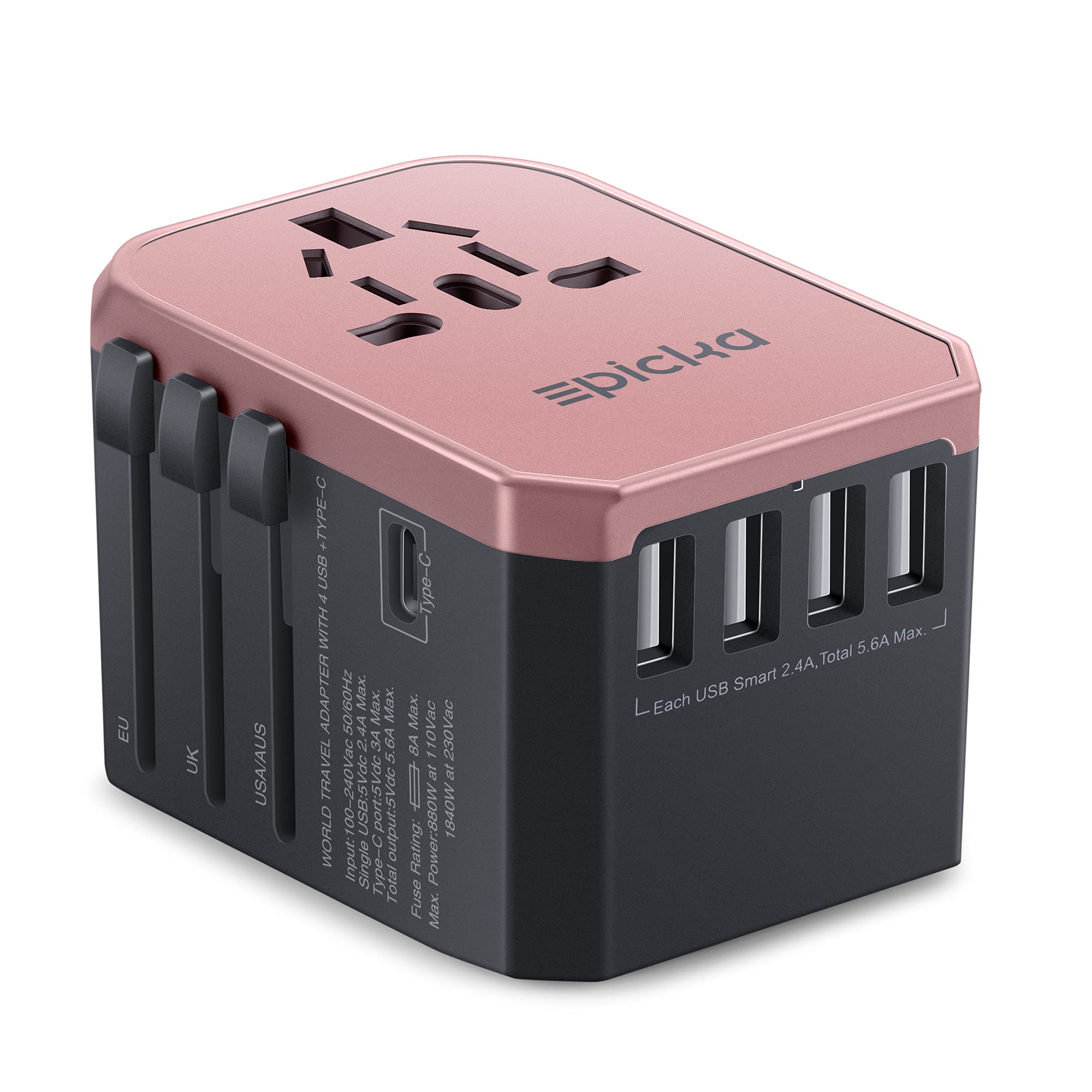
One of the most affordable options on this list, this cost-effective universal travel adapter has double USB ports, an integrated LED power indicator, and safety fuse protection. (Source: Internet)
- EPICKA Universal Travel Adapter One International Wall Charger AC Plug Adaptor with 5.6A Smart Power and 3.0A USB Type-C for USA EU UK AUS (TA-105, Grey)
- WORLDWIDE ADAPTER - Our all-in-one adapter includes 4 different plugs that cover over 150 countries, such as USA, Canada, Japan, UK, Ireland, Scotland, France, Germany, Italy, Spain, China, Australia, Argentina, New Zealand, etc. (excluding South Africa, India).
- 6 IN 1 TRAVEL ADAPTER - Charge up to 6 devices simultaneously at high speed with 4 USB-A ports (2.4A), 1 USB-C port (3A), and 1 AC socket. Ideal for charging iPhones, laptops, tablets, power banks, cameras, headsets, and more.
- SAFETY CERTIFIED - This travel adapter is equipped with built-in 8A fuse, safety shutters and plug lock system. In addition, it is certified by RoHS, CE, and FCC, ensuring its safety and reliability.
- NOT A VOLTAGE CONVERTER - This universal power adapter does not convert voltage and may not be suitable for use with high-power appliances like hair dryers, curling irons, straighteners, and other similar devices. Max Power: 880W at 110V, 1920W at 240V.
- SATISFACTION SERVICE - 30 days money-back and if there's anything wrong with the adapter, we will fix the problem for free or send you a new replacement by default (2-Year Limited). Please contact us if you have any questions, we will reply you within 24 hours and provide you with a satisfactory solution.
This all-in-one power adaptor has received more than 9000-star ratings on Amazon and is a fantastic choice for travelers. With just a compact design that fits in the palm of your hand, it provides power adaptable in more than 150 nations. The greatest feature is that it has four USB ports, as well as one USB-C port, and one AC socket, so you can charge many devices at once. Because it’s not a voltage converter, it just should be used with small electrical devices including cameras, tablets, and phones.
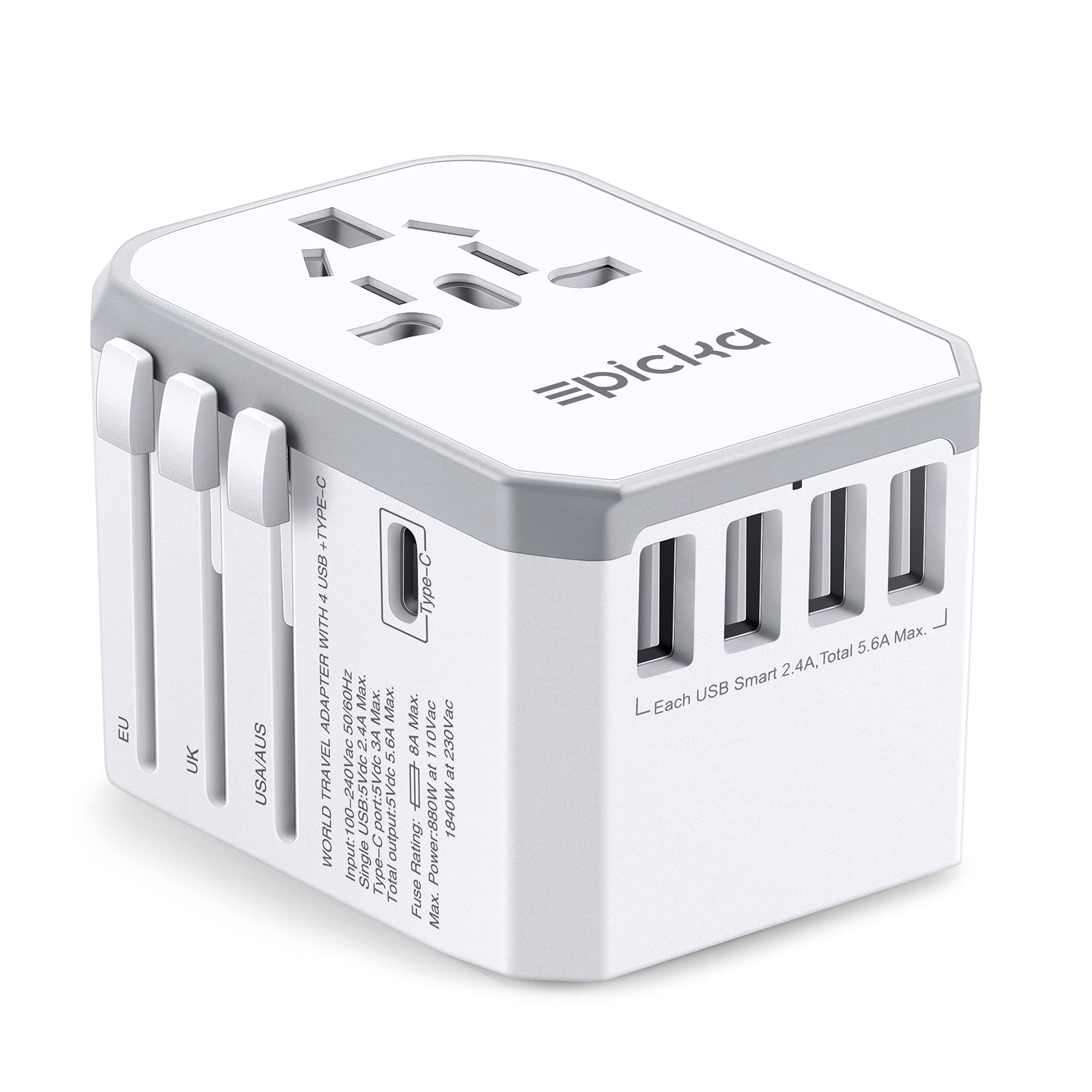
This all-in-one power adaptor has received more than 9000-star ratings on Amazon and is a fantastic choice for travelers. (Source: Internet)
Do I Need A Voltage Converter In Japan?
If your home country has a similar frequency and voltage as Japan, you don’t need to bring a voltage converter to your Japan trip. If your nation’s voltage or frequency is different from Japan’s, the next step is to check whether your electronic devices are dual voltage or not. Many modern electronics, including hair styling products and chargers for phones, tablets, laptops, iPads, and e-readers, are dual voltage, though you should always confirm this before using the device abroad.
To find out if an appliance is a dual voltage or not, you should read the small print on it. The device or power adapter is printed with 100-240V 50/60Hz, it is undoubtedly dual voltage and will function regardless of voltages and frequencies in the world.
Utilize a voltage converter if your appliance or power adapter is not dual voltage and the frequency or voltage in Japan is different from your nation’s.
If the device or its power source is not dual voltage, to utilize a single voltage device safely and efficiently (except for the 100V appliances of Japan), you should use a voltage converter or transformer.
Transformers and converters both serve a similar purpose, although they have different uses. While most transformers may be utilized with appliances that run continuously, converters are often used for devices that function for a short time (1-2 hours).
You can also like:
- How to Prepare for a Trip to Japan: A Comprehensive Guide
- Can You Rent A Car in Japan? – Everything You Need to Know When Renting A Car
Recommend best voltage converters on Amazon:
- BESTEK Universal Travel Adapter 220V to 110V Voltage Converter with 6A 4-Port USB Charging and UK/AU/US/EU Worldwide Plug Adapter (White)
- BESTEK Converter for 110V Devices: Patented technology converts voltage in different countries including Australia (100-240V, 50/60Hz) to US/Japan voltage (110V, 60Hz), ideal for charging all kinds of devices
- Charges 7 Devices Simultaneously: 4 USB charging ports with a combined 6A output, 3 AC sockets support Max 250W power. [*Note: USB outputs are completely isolated from the AC power to prevent all your devices from being damaged]
- 24-month Warranty & Safety Guaranteed: NRTL safety tested and upgraded hardware provides complete protection for you and your devices. Comes with over-current, over-load, over-heat and short-circuit protections
- Worldwide Use: 1 EU power cable and 3 international adapters (US/UK/AU plug) support outlets in Australia, North America, United Kingdom, Continental Europe, Japan, China, more than 150 countries all over the world
- Travel Design: Compact size (6x3x1.57 inches) with 5 foot detachable power cable makes this power converter easy to pack and take anywhere you go
Your greatest option for everything including charging your laptop to simultaneously charging many phones will be this all-purpose universal voltage converter. The accompanying extension cord may be utilized not only with the universal adapter and converter but also can be unplugged and used as a wall plugin that will fit between the hotel nightstand and your bed.
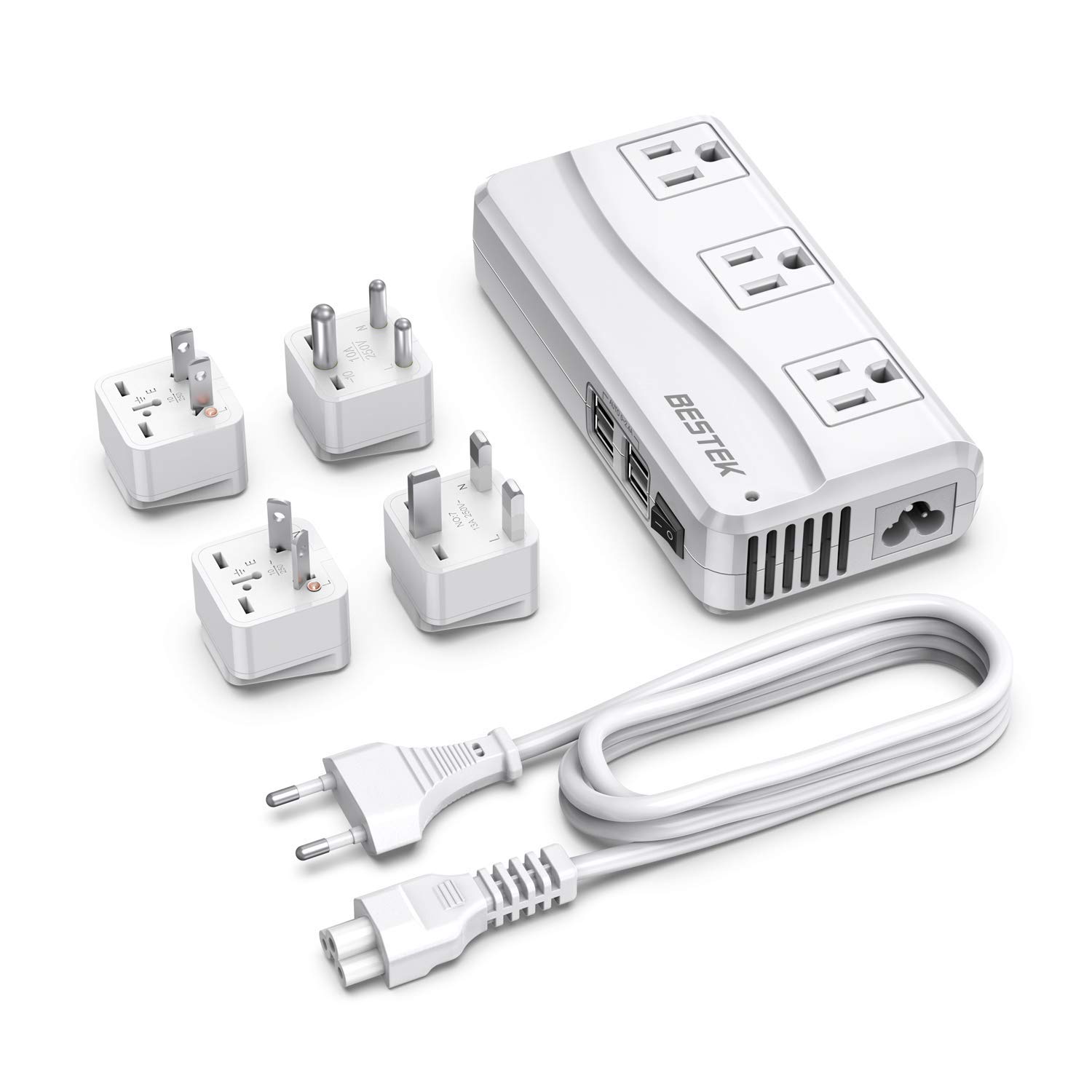
Your greatest option for everything including charging your laptop to simultaneously charging many phones will be this all-purpose universal voltage converter. (Source: Internet)
With its four USB connections and three AC outlets, this set can charge up to seven devices at once and is compatible with more than 150 countries worldwide. This product works well for small electrical equipment up to 220V, however, it shouldn’t be used with high-energy devices such as hair dryers.
- Patented product with Patent number: US10270355B1,it has New Feature: Compatible with hair straightener, curling wand, electric shaver, beard trimmer, laptop, breast pump, electric toothbrush, nebulizer, Xbox, tablet, game console, TV, and other electronic devices. Friendly reminder: *Do Not Use Hair Dryers, Tools, and Other Household Appliances over 230 watts.
- Worldwide Use-4 feet detachable EU power cable and 5 different sockets use for (UK, US, AU, IN,EU); voltage converts 220/240V to 110/120V could use American electronics in Antigua & Barbuda, Bulgaria, Cambodia, Canada, China, Costa Rica, Dubai, England, Fiji, Germany, Guam, Haiti, Hong Kong, Ireland, Japan, North Korea, South Korea, Malaysia, New Zealand, Peru, Puerto Rico, Singapore, Egypt, Turkey, United Kingdom more than 150 countries.
- Charges 6 Devices Simultaneously: With a PD 18W Type C and 3 USB ports feature all mobiles for Galaxy S10 / S9 / S8 / S7, Note 5 / 4, Nexus 6 and HTC combines capable of simultaneously charging multiple power-hungry devices for iPhone, iPad, android and tablets. The type C 18W port provides up to 4X faster charging speed, it can charge compatible devices from 0 to 80% in 30 minutes!
- Safety &Quiet-Built-in Fuse and thermostat switch will automatically shut off 220V to 110V converter to ensure safety in case of overheat, over-current, over-voltage, overcharge or short-circuit. The silent working fan brings you an undisturbed sleep.
- Travel Design-Compact small size (4.96X2.92X1.26 inches) product weight 1.15lb with a 4 feet detachable power cable makes this power converter easy to pack and take anywhere you go. Packing includes (Travel Pouch, Voltage converter, Four Plugs, Power Cord, User Manual)
This premium voltage converter may cost a bit more than the other choices, but it’s definitely worth it for tourists seeking a converter that is reliable and capable of handling most modern electronics. This international converter can handle anything from hair straighteners to cameras without getting the risk of a fuse blowing. Moreover, you can power up six devices at once with two AC outlets and four USB ports.
- Key Power 230-Watt Step Down 220V to 110V Voltage Converter & International Travel Adapter/Power Converter with USB-C Port 18W - [Use for USA Appliance Overseas in Europe, AU, UK, Ireland, etc.]
- Worldwide Use: it equipped 5 different sockets for (UK, US, AU, IN, EU); voltage converts 220/240V to 110/120V so you could use American electronics in Antigua & Barbuda, Aruba, Bulgaria, Cambodia, Canada, China, Costa Rica, Dubai, England, Fiji, Germany, Guam, Haiti, Hong Kong, Ireland, Japan, North Korea, South Korea, Malaysia, New Zealand, Peru, Puerto Rico, Singapore, Turkey, United Kingdom and more.
- Patented product with patent number: US10270355B1, it has new features which works perfectly for hair straightener flat iron, Curling Wand, electric shaver, beard trimmer, hair clippers, laptop, electric toothbrush, nebulizer, Xbox, tablet, kindle, TV, DVD players, Bluetooth speaker, camera batteries and so on.
- 4 USB ports: With a PD USB-C port and 3 usb-a ports feature all mobiles for Galaxy S10 / S9 / S8 / S7, Note 5 / 4, Nexus 6 and HTC combines capable of simultaneously charging multiple power-hungry devices for iPhone, iPad, android and tablets.
- Safety & Protections: Over-current, over temperature, short-circuit and overload. [*Note: USB outputs are completely isolated from the AC power to keep your devices safely]
- Friendly reminder: *Do Not Use with Hair Dryers, Tools and other Household Appliances over 230 watts.
The Key Power Voltage Converter includes multiple adaptors that adapt to international electrical sockets, unlike the majority of typical converters. Additionally, it works well with a lot of big, high-energy products, like curling irons and hair dryers. You have plenty of room to charge all of your electronic devices with the four USB ports. You can charge phones as much as twice faster thanks to its unique technology. If you are a multi-device user who travels regularly such as someone who works on the road, this item could be the best choice for you.
The Key Power Voltage Converter includes multiple adaptors that adapt to international electrical sockets, unlike the majority of typical converters. (Source: Internet)
Power Adapter Recommendations
Listed below are several options to transform your 3-pin plug into a 2-pin configuration. We have personally utilized all three variations without encountering any issues.
- Adapt with a Cheater Plug: A cheater plug provides a cost-effective method for converting your 3-pin plug into a 2-pin design. These plug adapters typically consist of robust plastic, ensuring durability. They are convenient to carry in a backpack or to leave plugged into your computer cable.
- Utilize a Plug Extender: A plug extender is designed to turn a 2-pin outlet into three or more 3-pin outlets. While slightly larger, they maintain durability and remain easily portable. These extenders are particularly useful when traveling with a companion who also requires a laptop charger or if you need to charge multiple devices simultaneously.
- Opt for a Global Travel Adapter: A global travel adapter proves invaluable for frequent travelers, as well as those embarking on their travel journey. These adapters offer multiple plug settings and often include voltage conversion capabilities. This universal travel adapter is an essential tool for individuals who travel regularly, providing versatility and convenience.
By exploring these options, you can effectively convert your plug configuration to suit your needs. Whether you choose a cheater plug, plug extender, or global travel adapter, each solution offers a reliable way to adapt your devices for various outlets.
Other things to keep in mind
Here are some other things to keep in mind about electrical outlets in Japan:
- The voltage in Japan is 100 volts. If your appliances are designed for a different voltage, you will need a voltage converter.
- The frequency of electricity in Japan is 50 or 60 hertz. Most appliances can handle both frequencies, but it is always best to check the manufacturer’s specifications.
- Some appliances, such as hair dryers and curling irons, may not work properly in Japan because of the different voltage and frequency.
- If you are bringing a sensitive appliance, it is best to check the manufacturer’s specifications to make sure it is compatible with the Japanese electrical system.
- Be careful not to overload the outlets. Each outlet can only handle a certain amount of power. If you are plugging in multiple appliances, make sure that the total wattage does not exceed the outlet’s capacity.
- Do not touch the exposed pins of the plugs. The pins can be sharp and can cause injury.
What’s The Difference Between A Travel Adapter And A Voltage Converter?
With the aid of a travel adapter, you may use your electronic equipment in other countries with various plug types for electrical outlets. It doesn’t impact the voltage.
On the other hand, a voltage converter is a device that changes the voltage of electrical current from one particular level to another level. It is essential if you are visiting a location where the voltage is different from what your electronics are compatible with.
For example, you would require a voltage converter to operate your 110V equipment if you were traveling from the US (the standard voltage of 110V-120V) to a European country (220V-240V voltage).
It’s crucial to remember that some electronics, including laptops and cellphones, can handle both 110V and 220V since they are dual voltage devices. In this case, a travel adapter is enough to help your device operate smoothly and you won’t need a voltage converter. Before traveling abroad, it is recommended to check the voltage needs of your electrical appliances.
Where To Buy Plugs And Converters In Japan
Most major cities have establishments like BicCamera, Yodobashi, and Yamada Denki, as well as smaller local electronics retailers where you can find many kinds of plugs, converters, and electrical products sold. Now, more and more major stores offer Duty-Free counters along with staff that can speak many languages in addition to English and Chinese.
If you are looking for anything “electrical” related in Tokyo, electrical areas like Akihabara may be the finest spot to explore. Although the majority of convenience stores generally offer smartphone chargers, voltage converters or type A plugs just sold on extremely rare occasions. Nevertheless, airport convenience shops, such as in Haneda and Narita Airport sell them.
These devices are also available at an affordable price of around 300 to 500 Yen (~$2.5 to ~$4). Additionally, don’t forget to inquire at your hotel, many places provide it to their customers.
FAQs
1. Are electrical outlets in Japan the same as those in the US?
The answer is yes. The electrical outlets in the US and Japan are the same; both utilize outlets and power plugs of types A and B. You aren’t required to use a voltage converter because Japan’s voltage and the United States’s are as well compatible.
2. What would happen if a 110V appliance was plugged into a 220V outlet?
For example, if we plug a 110V device into a 220V socket, the device would burn since it is not designed for that voltage. A voltage transformer or a voltage converter will be required in this case. They will change the 220 volts from the electrical socket to the voltage of 127V that your equipment may use.
3. Can I use my US plugs in Japan?
You do not require a power plug adaptor to use electrical outlets in Japan if you reside in the United States. Your plugs are compatible. It is advised that you bring a three to two-prong adapter in case type B plugs are not accessible.
4. Can you use 220V devices in Japan?
You require a voltage converter in Japan if the standard voltage in your nation is between 220V and 240V (Asia, Europe, Africa, and Australia). Some claim that using your electronics in Japan without a converter may lead to risks. They probably won’t be damaged but they might not perform at their best.
5. Are there electrical outlets on Japan’s Shinkansen train?
Most Shinkansen train carriages have electrical outlets installed. You may use your computer or charge your smartphone for a few hours while you’re on the Shinkansen. The outlet can be found at the foot of the walls, next to the window.
6. Can 100V appliances be used in North America?
Because they feature plugs that fit into American outlets, these appliances seem to be compatible with North America, but appearances can be deceiving. Although Japanese electronics can be generally used in North America without a converter, not all of them.
For several items, when plugged into a 120V American outlet without the proper converter, Japanese appliances that have been designed to function on 100V voltage might burn out.
7. Can I charge my iPhone or other smartphone in Japan?
iPhone, Android, and other smartphone chargers typically have dual voltage, allowing for global use. To plug the phone charger into a Japanese outlet, you might still need an adapter.
8. Can I use a Japanese electrical socket to charge my laptop?
Yes, as long as the electrical outlet is consistent with the voltage and plug type of the laptop’s charger, you can use your laptop charger in Japan. As the majority of laptop chargers are dual-voltage devices, they can operate with Japanese outlets without any problems. However, when using your laptop charger abroad, make sure you double-check the voltage standards.
9. Can a hair dryer or curling iron be used in Japan?
The power plug type the appliance has and whether it is compatible with the voltage and frequency utilized in Japan will determine whether you may use your personal hair equipment, such as a hair dryer, hair straightener, or curling iron there or not. If your hair styling devices are incompatible with the voltage or frequency in Japan, you might require a voltage converter.
Sadly, travel adapters and voltage converters do not always function well with high-power appliances like hair dryers, hair straighteners or curling irons because they can be risky to use with these equipment. Thus, a dual voltage travel-specific hair dryer, hair straightener, or curling iron that is compatible with all voltages would be a safer choice.
10. How can I determine whether my electrical appliance is dual voltage?
To determine if an electrical appliance or power adapter is dual voltage or not, you should need to read the tiny print on it. This device or power adapter is dual voltage and can operate in every voltage and frequency utilized across the world if it has been printed with 100-240V 50/60Hz.
If the appliance or power adapter doesn’t provide this information, you might be able to look it up in the manual or by getting in touch with the manufacturer.
11. Is Japan 110V or 220V?
The electrical voltage in Japan is 100 Volts, which differs from North America’s 120V, Central Europe’s 230V, and the standards in many other global regions. Japanese electrical plugs and outlets closely resemble North American ones. Although there are various plug versions, the most common ones are non-polarized and ungrounded, featuring two pins.
12. Are Japan’s wall outlets different?
Despite Japan’s 100 Volt voltage, which is lower than North America’s 110 Volt and Central Europe’s 230 Volt, they are generally compatible, and most devices work seamlessly. Japanese power outlets come in several variations but are typically non-polarized and equipped with two pins.
13. What’s the reason for Japan’s 100V?
Japan may have opted for 100V due to potentially more efficient transmission lines and its long-standing utilization in the country. The 60Hz frequency, stemming from Tesla’s polyphase motors, has remained the standard since.
14. Can a 100-240V device function in Japan?
Yes, of course. Japan utilizes a 100V supply voltage, which falls within the 100-240V range that dual voltage appliances are designed to operate on. This means that such devices are fully compatible with Japan’s electrical system.
15. What occurs when you connect a 100V device to a 120V outlet?
Naturally, if you employ a 100-volt appliance in a 120-volt setting, the excess voltage can potentially damage your device. In reality, the disparity of 10 to 25 volts leads to suboptimal performance because the appliance or device doesn’t receive the required power.
Conclusion
In brief, electrical outlets in Japan allow 100V voltage and 50 or 60 Hz frequency. Whether your device is compatible with electrical outlets and power plugs in Japan depends on the frequency and voltage in your country. Before traveling to Japan, check your electrical appliances carefully and consider a converter if necessary.

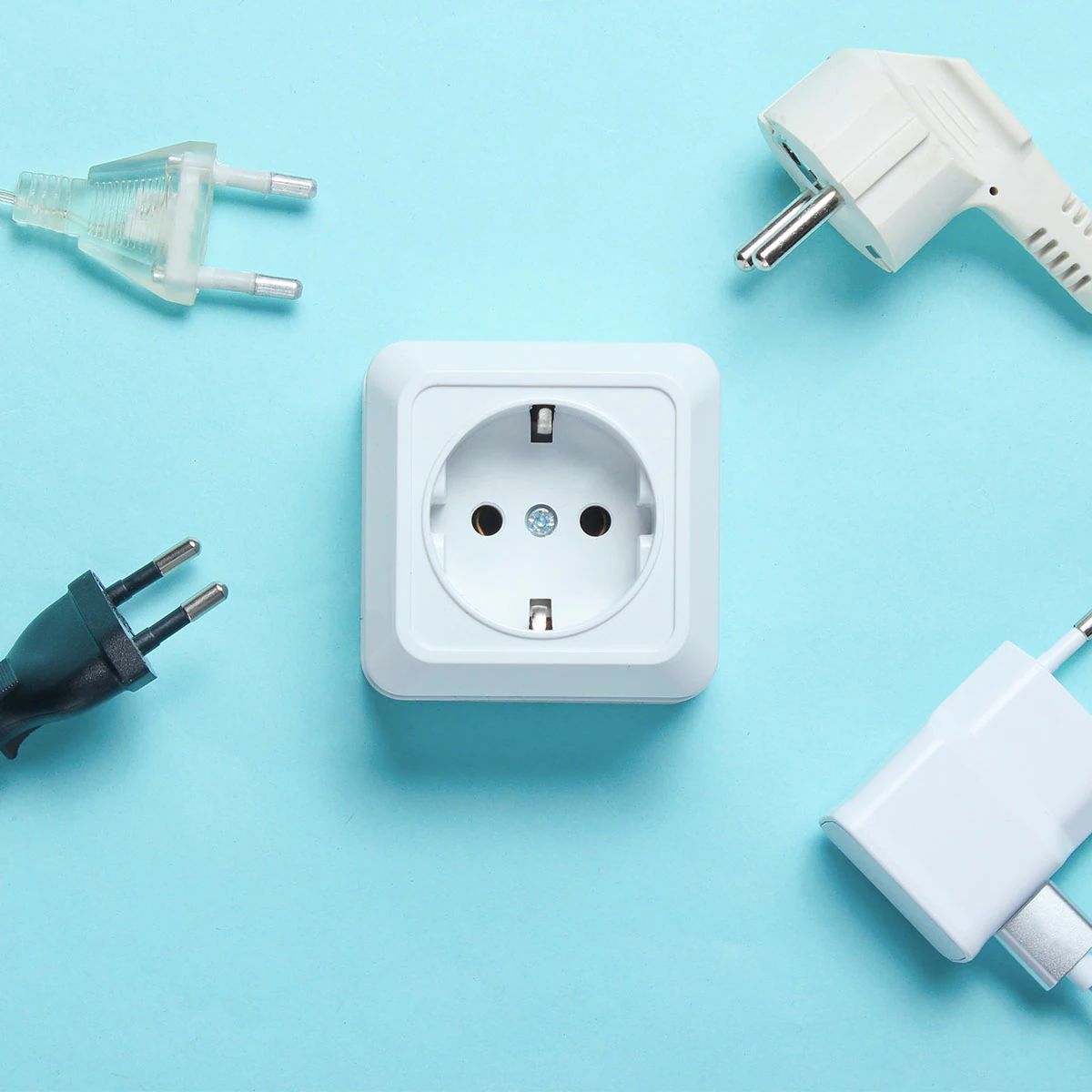





![Key Power 230-Watt Step Down 220V to 110V Voltage Converter & International Travel Adapter/Power Converter with USB-C Port 18W - [Use for USA Appliance Overseas in Europe, AU, UK, Ireland, etc.]](https://m.media-amazon.com/images/I/51QhZEHCx6L._SL160_.jpg)
